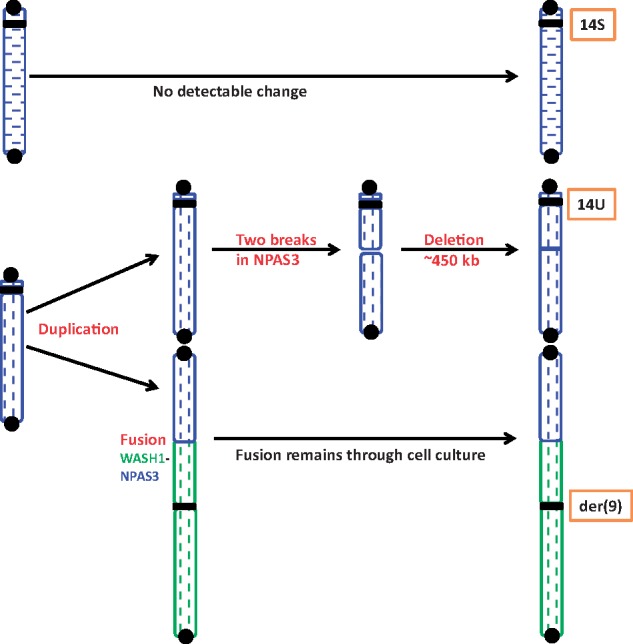Figure 5.

The process of chromosome rearrangement involved in chromosome 14. Chromosomes 9 and 14 regions are marked by green and blue, respectively, and the two homologues of chromosome 14 are distinguished by vertical and horizontal patterns. Because chromosome 14 consists of two different allele contents in the SNP array, it must have originated from a normal pair with different allele profiles. Variant analysis in the sorted chromosome samples show that 14S and der(9) have different chromosome 14 allelic profiles, but der(9) and 14U have the same chromosome 14 allelic profiles. This indicates that the origin of der(9) was associated with duplication of 14U. One of the homologues, 14S, does not have detectable changes at chromosomal level and der(9) remains unchanged during cell culture. However, duplication of the long arm of 14U is fused with 9p to form der(9). The 14U chromosome at passage P20 has a cryptic deletion in the same region as the breakpoint in der(9). Black circles and squares show telomere and centromere, respectively. Color figure is available in online version.
